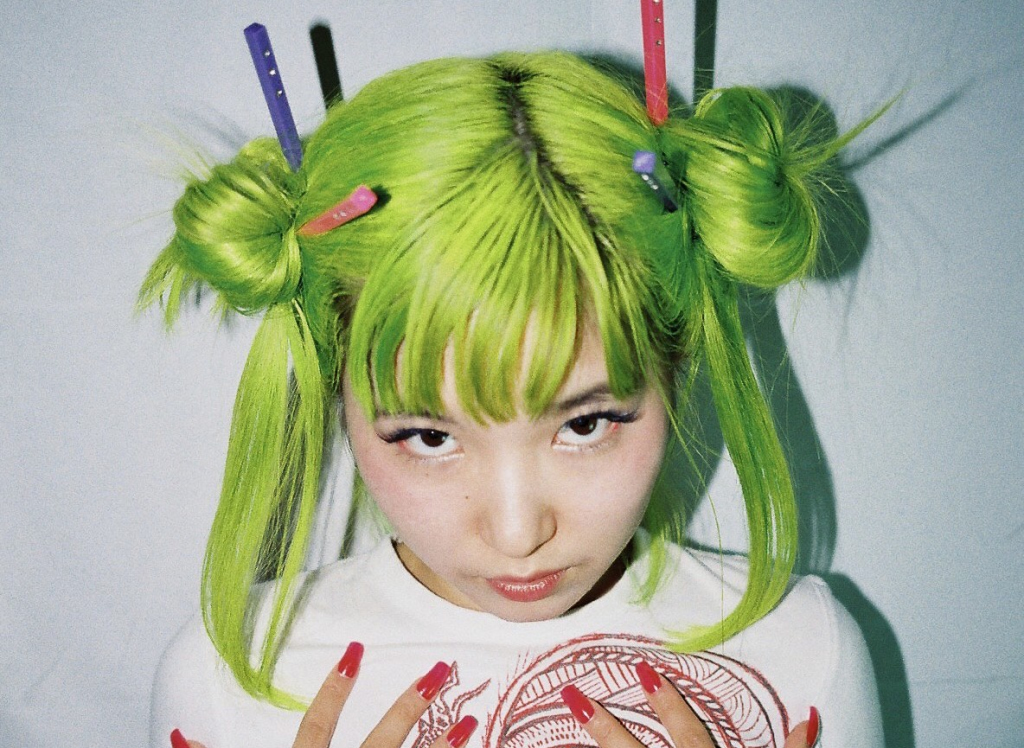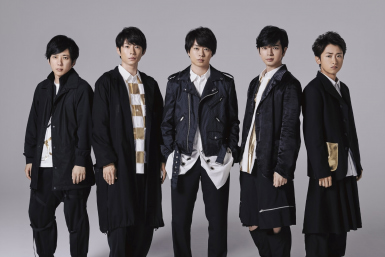From big-name comebacks (Tokyo Jihen, Ken Hirai, Quruli) to hyped works from the currently on-trend (No Buses, Chai, 4s4ki), to those that deserve so much more attention (Masayoshi Fujita, Foodman, Haco), the past few months have seen an overwhelming number of noteworthy Japanese releases. Spoilt for choice, the five below offer just a taste of the finest Japanese releases of summer 2021.
Aya Gloomy, ‘Tokyo Hakai’
(Self-released / Friendship)
Back in 2018, Aya Gloomy’s first album Riku no Koto featured a track titled “2020 / Tokyo Destruction.” Little could she have known what would happen less than two years later – and how reflecting on the strangeness and loneliness of 2020 would shape her sophomore release, Tokyo Hakai (appropriate to its foreshadow, loosely translated as Tokyo Destruction).
The nightmarishly futuristic pop music of Gloomy, a musician, producer, model and vintage shop owner, has found its perfect theme – but Tokyo Hakai is also her most developed release yet. It features similarly minimalist, club-influenced synthpop to her debut and its follow-up EP Kanjiru, a simple concoction of uncomplicated melodies and echoing beats. Importantly, however, Gloomy pushes her sound further, in several ways: her songwriting is more ambitious, varied and with greater depth; her own production is richer and her experiments are wilder.
Tokyo Hakai’s percussion clatters and clangs and Gloomy’s voice repeats in a deviant, menacing manner. All the while, her hooks and melodies stand out, dug into your ears by dance beats. Like all great experimental pop, Gloomy manages to be both ridiculously catchy on the whole and fascinating in her details – Tokyo Hakai is a record that sounds as if the churning cogs and grinding mechanizations of a factory have coalesced into forming strange, irresistible pop songs.
KM, ‘Everything Inside’
(Mary Joy)
Some beatmakers have a particular style or method that sets them apart. Samples dug from the deepest crates, a certain industrial rattle, cuts from martial arts movies – that identifying feature can be anything, really. Other producers are distinctive for their versatility and panache, for their quality when handling any kind of beat. KM (Kei Matsumori) is this latter kind of hip-hop beatmaker, an instrumentalist who doesn’t just do everything, but does it really, really well.
The press release for Everything Inside declares KM a “trendsetter,” but the question is, which trend? KM sets listeners off in a dozen or so different directions, from free jazz rap to hip hop grounded in bewildering, technical electronica. His guests range from Japanese rap mainstays (Dengaryu, Campanella) and on-trend stars (Daichi Yamamoto, (Sic)boy) to hyped underground artists (NTsKi) and alt-R&B singers (Manon).
But KM himself is always the main star. His beats test his performers’ dexterity, and consistently impress in their disregard for typical hip hop styles and structures. Everything Inside is an all-star work unrestricted by hip hop conventions, not just one of the most impressive Japanese hip hop releases of the summer but one of the finest of 2021 so far.
Handsomeboy Technique, ‘Technique’
(Second Royal)
The return of plunderphonic icon HandsomeBoy Technique, the solo project of Kyoto-based DJ and producer Yoshitaka Morino, doesn’t disappoint. Technique is the first HbT album in over a decade, following the critically revered and popular favourite Adelie Land (2005) and its follow-up, Terrestrial Tone Cluster (2009).
Technique is another HbT record that merges samples with pop, following in the wake of plunderphonic pioneers The Avalanches and The Go! Team. But fittingly for a decade-long break, it moves HbT along from the project’s earlier, hip hop and house-influenced days. Here Morino leans heavier on indie: opting for plucked guitars and more typical song structures. A guest line-up including Keiichi Sokabe (Sunny Day Service), Motoi Kawabe (Mitsume), Ayaka Tatamino (Homecomings) and Yosuke Inoue (Turntable Films) further bolsters Technique’s indie cred.
The result is the prettiest, smoothest HbT record so far, a recognisably finessed shift from Morino’s earlier material. From its opening moment, Technique dances with revelation, upholding an untouchable buoyancy that is both a mood and so perfectly crafted as to go far beyond simple ‘mood music’. It’s difficult to find any fault with whatsoever – a momentous comeback.
CRYSTAL, ‘Reflection Overdrive’
(Flau)
The image of a dolphin on the cover of Reflection Overdrive is so exceptionally clear and pristine that it’s almost surreal – which isn’t actually a bad analogy for the music contained within. CRYSTAL’s music appears so clean and crisp that it can be both appealing and a bit unnerving.
The cleanness of Reflection Overdrive feels odd because it’s a record that, in most of its features, should belong in another time. Teeming with nostalgia and played out with retro instruments, Reflection Overdrive should be hazier, cracklier and tinnier. But instead, it’s totally modern. Containing great synth leads and worming hooks, grounded in stellar songwriting and supplemented by an intriguing depth of style and instrumentation, its production is punchy and makes audible CRYSTAL’s confluence of new wave, techno, synthpop, funk, ambient and videogame music.
An excellent exercise in retro-futurism, Reflection Overdrive is both fascinating and fun, merging the new and nostalgic so seamlessly as to suspend itself well above the reality of contemporary pop.
RAY, ‘Yellow’
(Distorted Records)
When ・・・・・・・・・ (in actual words, that’s “Dots”) broke into the mainstream in 2016 with their combination of idol pop and shoegaze, the group captivated and polarized audiences in equal measure. The sound was noisy and harsh, the idols were anonymous (named ・, or Dot) and they wore masks or goggles at live shows. Even if Dots wasn’t liked by all (some dismissing it all as clever, provocative PR), it was certainly somewhat different; but the group dissolved in 2019, followed almost immediately by RAY.
RAY is another idol group, and contains one graduate from Dots and another from pop rock group Niji no Conquistador, among others. And aside from the fact that RAY’s names and faces are no longer hidden, the music itself has continued in a similar vein to Dots’ shoegazing idol pop.
Yellow follows Blue, the group’s first single in 2019, and Pink, their 2020 full-length debut, and is RAY’s strongest release yet. While Pink was certainly thrilling, I found it slightly repetitive and overlong – Yellow, despite being much shorter (technically it’s a single, but only because the label says so. There are four tracks), is more varied and consistent.
Whether glossy shoegaze or noisy J-pop, RAY’s music isn’t interesting just because it is an alternative kind of pop. Dreamy, pretty and well-produced, Yellow is far better than much modern shoegaze – a short release of high quality that lays bare the strength and nuance in the group’s sound.
Read more:
Ed’s Picks: 5 Best Albums of Spring 2021
Ed’s Picks: 5 Best Singles of Spring 2021
Complete Guide to 50 Years of Music
Complete Guide to City Pop
Complete Guide to Math Rock









